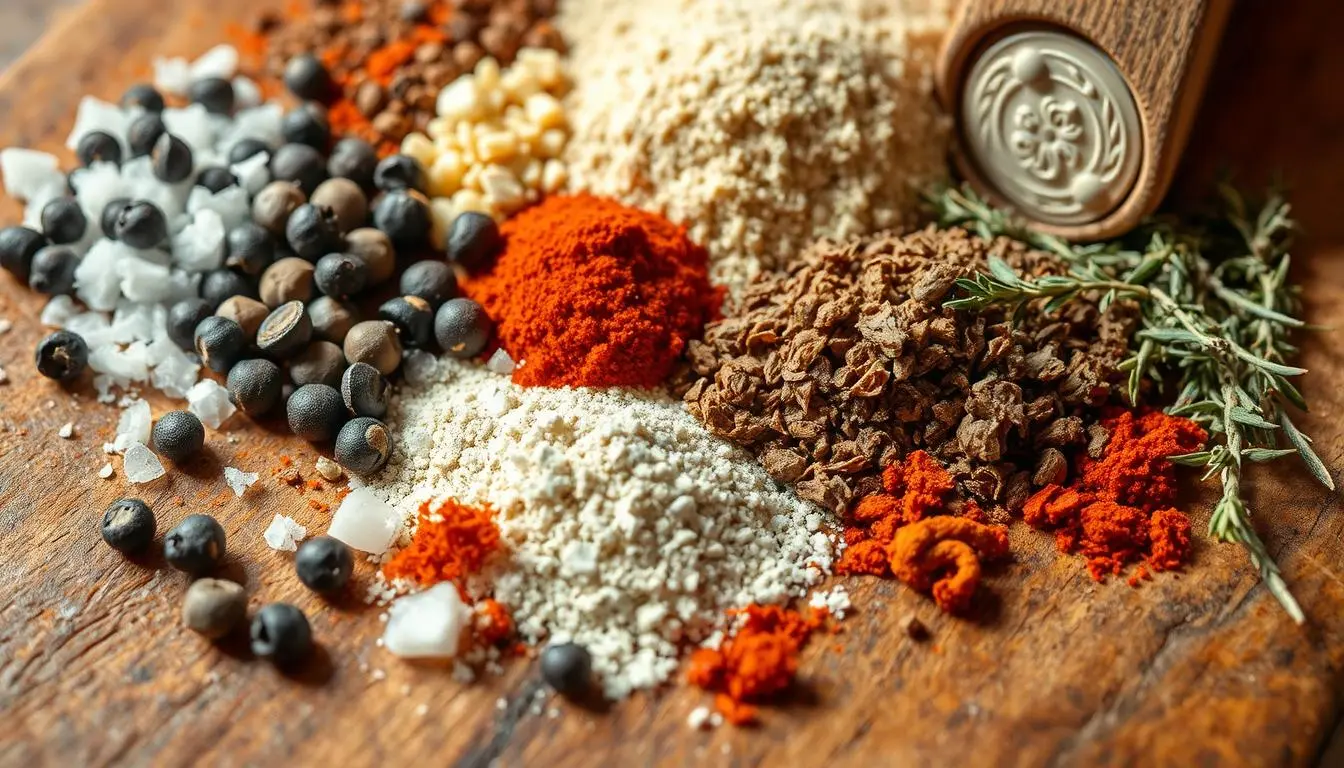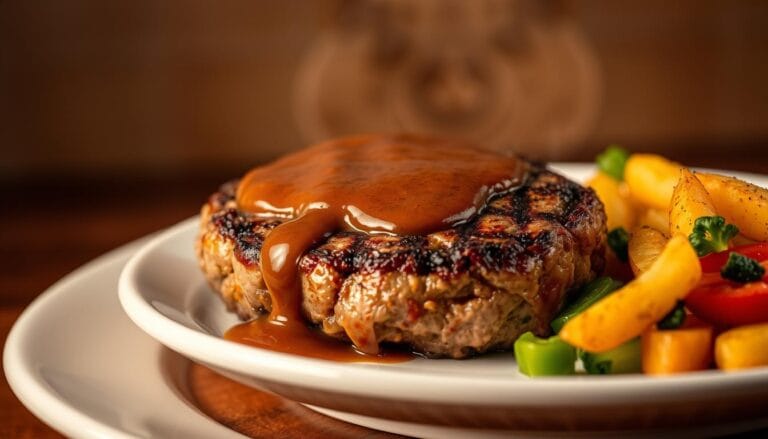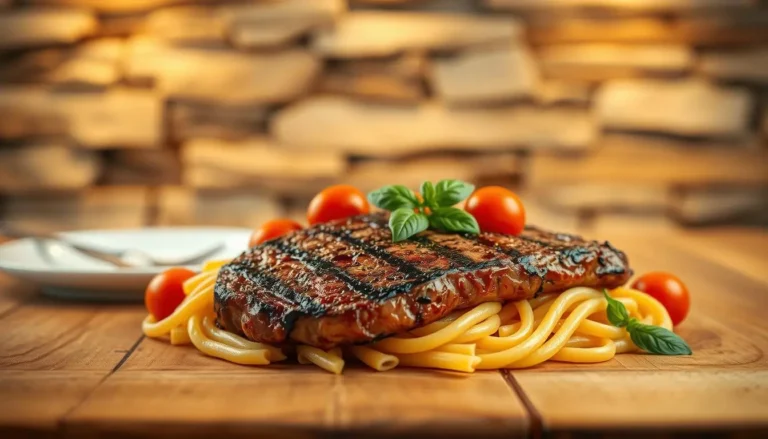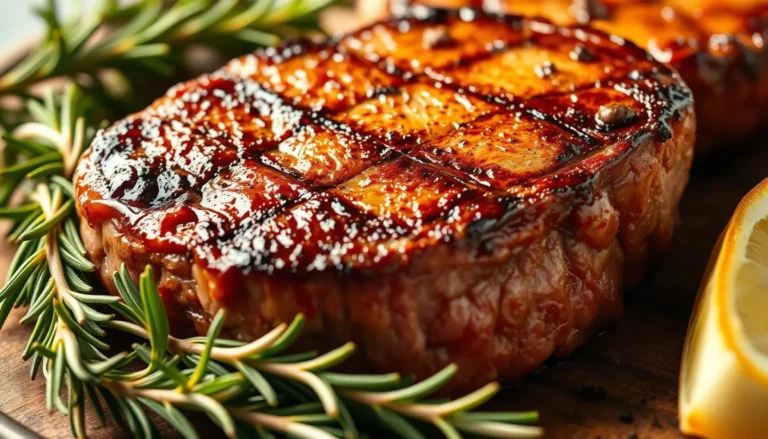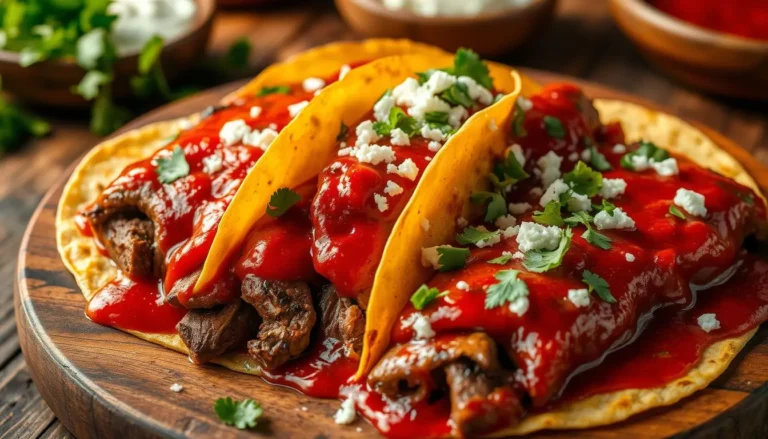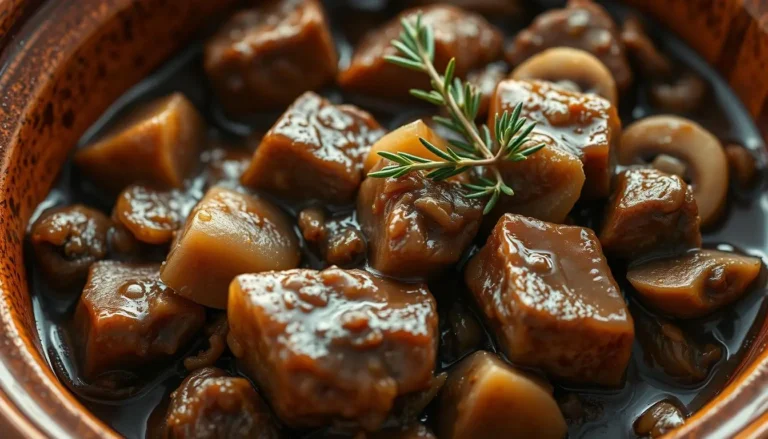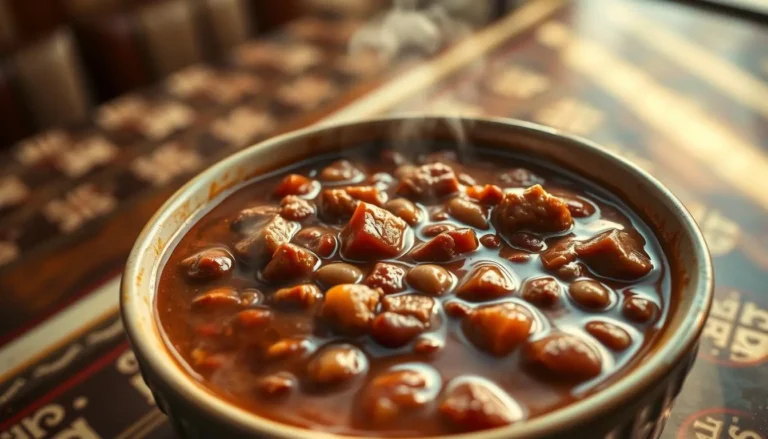How to Make The Best Longhorn Steak Seasoning Recipe
Imagine a sizzling steak that takes you to LongHorn Steakhouse. Since 1981, this Atlanta-born restaurant has changed how we enjoy steak. It grew from a humble roadhouse to a top spot with over 500 locations in the U.S.
Looking for the best longhorn steak seasoning recipe? You’re in the right place. Whether you cook at home or love grilling, learning to season meat right can make it taste like restaurant food. The secret is in the right mix of spices that LongHorn is famous for.
Want to make that restaurant flavor at home? With a few key ingredients, you can create a longhorn steak seasoning that will wow everyone. This guide will show you how to make LongHorn’s legendary seasonings in your kitchen.
Table of Contents
Understanding LongHorn’s Signature Seasoning Legacy
LongHorn Steakhouse started small but grew big, thanks to their famous seasoning blends. Now, they have 572 locations across the U.S. Their longhorn seasoning is so good, people keep coming back for more.
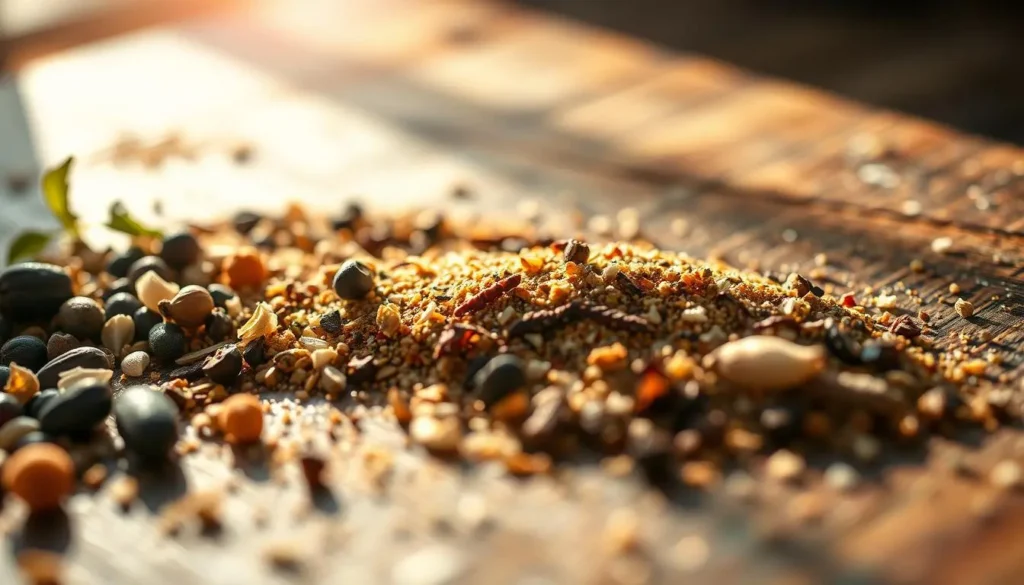
The story of LongHorn’s seasoning recipe is one of culinary creativity. They don’t just use salt and pepper. Instead, they create unique flavors that set them apart in the steakhouse world.
Roots of Culinary Excellence
LongHorn Steakhouse began with three special seasoning blends. These blends are key to their menu:
- Char Seasoning: A bold, intense blend perfect for creating a robust crust
- Grill Seasoning: A balanced mix that enhances the natural meat flavors
- Prairie Dust Seasoning: A versatile blend with a hint of southwestern inspiration
Evolution of Flavor
LongHorn’s focus on flavor has fueled their success. They make an average of $106,000 a week at each location. This shows that great seasoning can really make a difference in the food world.
A Legacy of Taste
LongHorn stands out because they see seasoning as an art. Their longhorn seasoning is more than spices. It’s a sign of their passion, tradition, and dedication to great food.
Essential Ingredients for Longhorn Steak Seasoning Recipe
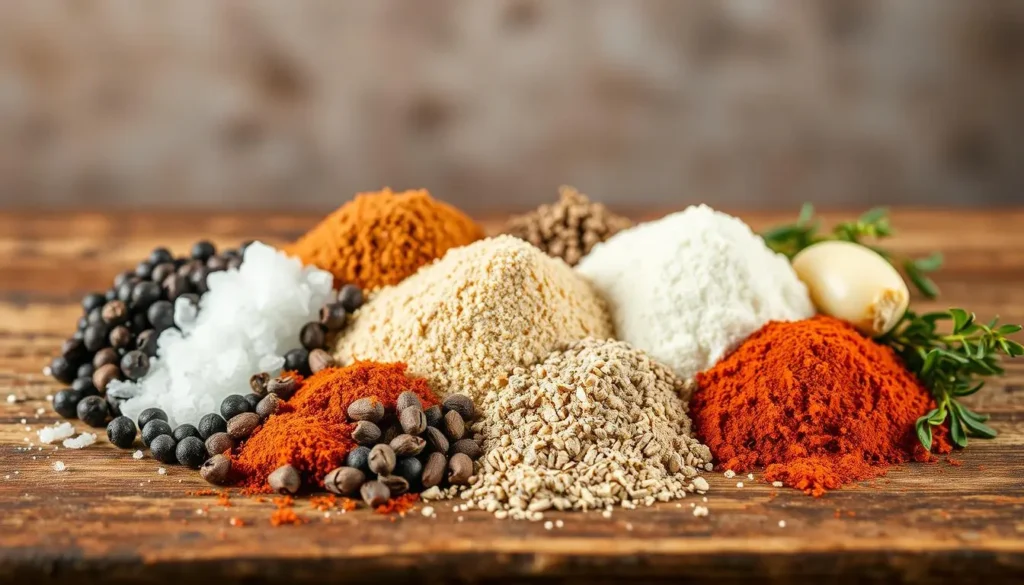
Making the perfect longhorn steak seasoning recipe is all about the right spices. These spices turn a regular steak into a dish fit for a restaurant. Knowing the key ingredients is the first step to creating a flavor that’s both deep and complex.
Here are the essential components for an authentic steak seasoning blend:
- Garlic Powder: Provides a robust, aromatic base
- Kosher Salt: Enhances natural meat flavors
- Paprika: Adds rich color and subtle sweetness
- Onion Powder: Contributes a deep, savory undertone
- Black Pepper: Delivers a classic spicy kick
Professional chefs say the right mix of spices can make a simple steak taste like it’s from a steakhouse. The trick is to find the right balance. This balance brings out the meat’s natural flavors and adds a rich taste.
| Ingredient | Quantity | Purpose |
|---|---|---|
| Garlic Powder | 2 tablespoons | Aromatic base |
| Kosher Salt | 1 tablespoon | Flavor enhancement |
| Paprika | 1 teaspoon | Color and sweetness |
| Onion Powder | 1 teaspoon | Savory depth |
| Black Pepper | 1/2 teaspoon | Spicy notes |
Creating the perfect longhorn steak seasoning recipe is an art. Feel free to try different amounts and add your own twist. This way, you can make the best steak seasoning recipe that’s uniquely yours.
The Science Behind Perfect Steak Seasoning
Making the perfect longhorn steak seasoning is more than just adding salt and spices. It’s a science that turns a regular steak into a delicious treat. Knowing how ingredients work together can make your steak seasoning go from good to great.
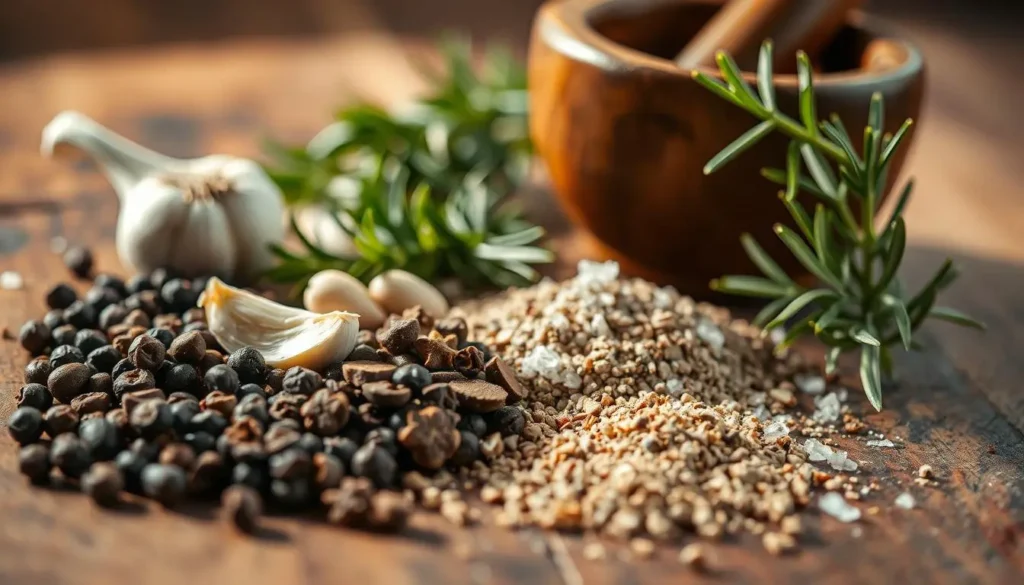
The Crucial Role of Salt and Spices
Salt is key in making steak. It does two important things:
- It makes the meat taste better by bringing out its natural flavor
- It makes the meat tender by changing the protein structure through osmosis
Brown Sugar’s Magic in Char Formation
Brown sugar is the magic ingredient for a perfect crust. When it gets hot, it breaks down and creates complex flavor compounds. This makes the steak taste sweet and smoky, turning it into a special dish.
| Seasoning Component | Primary Function | Flavor Impact |
|---|---|---|
| Salt | Flavor Enhancement | Intensifies Natural Meat Taste |
| Brown Sugar | Char Formation | Creates Caramelized Crust |
| Spices | Flavor Complexity | Adds Depth and Aromatic Notes |
Temperature and Timing Considerations
Getting the seasoning right for longhorn steak takes skill. Season the steak at room temperature so the spices can soak in. Timing is also important: season 30-40 minutes before cooking for the best flavor.
“Great seasoning is an art form that transforms simple ingredients into an extraordinary culinary experience.”
Creating the Perfect Seasoning Blend at Home

Making your own longhorn steak seasoning lets you bring restaurant-quality flavors home. LongHorn’s exact spice mix is a secret, but you can make a tasty copycat version. This turns simple steaks into amazing meals.
To make the best steak seasoning, start with coarse sea salt and black pepper. These are the basics for a strong flavor.
- Kosher salt (coarse grain)
- Fresh ground black pepper
- Smoked paprika
- Garlic powder
- Onion powder
- Brown sugar
The key to a real longhorn steak seasoning is mixing spices just right. Try different ratios to find your favorite mix. A common mix might be:
| Ingredient | Quantity |
|---|---|
| Kosher Salt | 2 tablespoons |
| Black Pepper | 1 tablespoon |
| Smoked Paprika | 1 teaspoon |
| Garlic Powder | 1 teaspoon |
| Brown Sugar | 1/2 teaspoon |
Keep your homemade seasoning in an airtight container to keep it fresh. This recipe will last up to three months in a cool, dark spot. Remember, making the perfect blend takes time. So, don’t be shy to tweak and make it your own.
Secrets of the Prairie Dust Recipe
Discover the secret to LongHorn’s famous Prairie Dust seasoning. It turns simple meals into unforgettable dining moments. This blend captures the bold, southwestern taste with its rich spice mix.
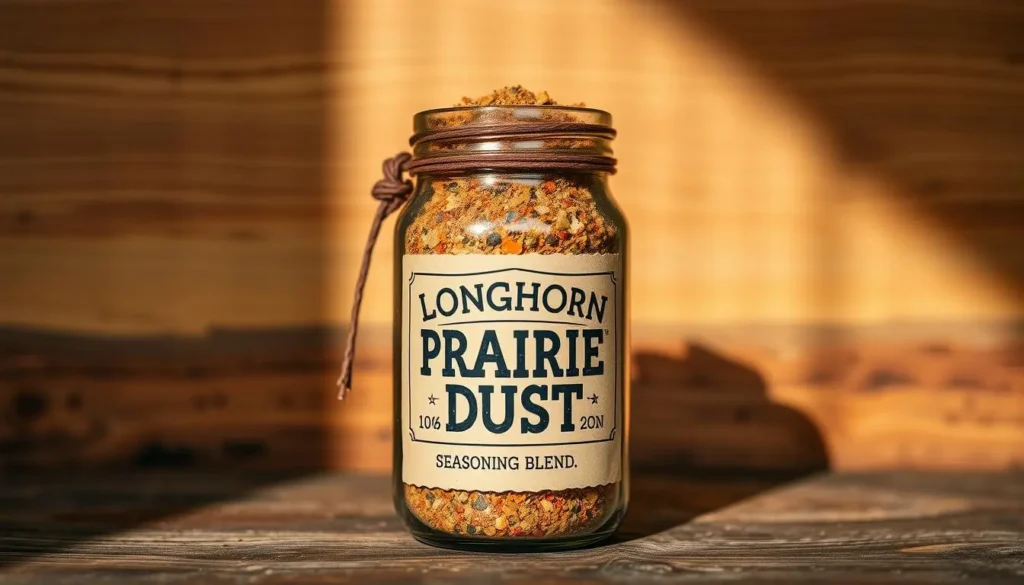
The prairie dust recipe is more than a spice mix. It’s a mix of ingredients that adds depth and excitement to your dishes.
Spice Components
Your homemade longhorn prairie dust recipe will have a strong spice mix:
- Black pepper for a sharp kick
- Cayenne for subtle heat
- Coriander for earthy undertones
- Paprika for rich color and mild sweetness
- Turmeric for golden hue and warm flavor
Mixing Ratios
Getting the right prairie dust seasoning mix is key. Here’s a suggested ratio for your homemade blend:
- 1/2 teaspoon kosher salt
- 1 teaspoon black pepper
- 1/2 teaspoon smoked paprika
- 1/4 teaspoon cayenne
- 1/4 teaspoon ground coriander
- 1/4 teaspoon turmeric
Application Techniques
To get the most flavor from your longhorn seasoning, use it generously. Coat your protein or vegetables well, massaging the spices for full coverage. Let it sit for 30 minutes before cooking to let the flavors soak in.
Pro tip: Prairie Dust isn’t just for steaks—it’s versatile enough to elevate chicken, pork, vegetables, and even french fries!
Mastering the Char Seasoning Technique
Unlocking the secret to perfect longhorn steak seasoning is all about mastering the char technique. This technique is what makes steakhouse cooking stand out. It turns an ordinary steak into a restaurant-quality dish.
To create the ultimate longhorn steakhouse seasoning recipe, focus on a few key factors:
- High-heat cooking surface
- Precise seasoning application
- Timing and technique
- Understanding meat chemistry
Professional chefs suggest using a cast-iron skillet or grill that can get up to 500-550 degrees Fahrenheit. The extreme heat creates the signature caramelized crust that makes steakhouse steaks unforgettable. When seasoning, press the spices gently into the meat for better flavor.
For those wanting to cook like LongHorn Steakhouse at home, here are some pro tips:
- Pat the steak dry before seasoning
- Use coarse salt and freshly ground black pepper
- Let the steak come to room temperature before cooking
- Allow the steak to rest for 2-3 minutes after grilling
The magic of char seasoning is in knowing how heat affects the meat’s surface. Adding a light sprinkle of brown sugar can help achieve that perfect caramelized exterior. This trick mimics the techniques used in top steakhouses.
Best Cuts of Steak for Longhorn Seasoning
Choosing the right steak is key when using longhorn seasoning. Not all steaks are the same. The right cut can make your grilling amazing.
Understanding meat cuts is crucial for the best seasoning recipe. Let’s look at the top steaks that go great with LongHorn-style seasonings.
Premium Cuts Selection
- Ribeye: The king of flavorful cuts, with exceptional marbling
- T-bone: Delivers rich, complex taste profiles
- Kansas City Strip: Lean yet tender meat
- Flat Iron: Surprisingly tender with deep beef flavor
Meat Quality Guidelines
| Cut | Marbling | Flavor Intensity | Recommended Seasoning |
|---|---|---|---|
| Ribeye | High | Intense | Char Seasoning |
| T-bone | Medium | Rich | Prairie Dust |
| Kansas City Strip | Low-Medium | Moderate | Classic Blend |
When picking your steak, look for cuts with good marbling. They should be 1-1.5 inches thick. This helps with flavor and cooking with your longhorn seasoning.
Proper Application Methods for Maximum Flavor
Learning how to apply longhorn steak seasoning is key to making a great steak. Your seasoning method can greatly affect the taste of your meal.
Here are the main steps to follow when using your longhorn steakhouse seasoning recipe:
- Pat the steak dry with paper towels to help the seasoning stick
- Put a lot of seasoning on, pressing it into the meat
- Let the seasoned steak sit at room temperature for 30-45 minutes before cooking
- Use about 1-2 teaspoons of seasoning for each side of the steak
The secret to LongHorn-style seasoning is understanding flavor penetration. You want to make a strong crust that keeps the meat’s juices in and adds lots of flavor.
Experts say to mix coarse salt with ground spices for a rich seasoning. The seven-pepper seasoning at LongHorn Steakhouse adds a complex taste that’s great for sirloin and New York strip steaks.
Pro tip: Always season your steak just before cooking to prevent moisture extraction that could compromise the meat’s texture.
Keep in mind that different steak cuts need different seasoning techniques. Thicker cuts like ribeye and porterhouse need more seasoning than leaner cuts.
Storage and Shelf Life Tips
Keeping your best steak seasoning recipe fresh is key. Homemade longhorn seasoning stays great with simple storage tips.
Storing your seasoning right is essential. The right container and method can make it last longer.
Ideal Container Selection
- Choose airtight glass jars with tight-fitting lids
- Use ceramic containers with sealed tops
- Select dark-colored containers to protect from light exposure
- Avoid plastic containers that may absorb odors
Preservation Techniques
Here are ways to keep your seasoning fresh:
- Store in a cool, dark pantry away from direct sunlight
- Keep away from heat sources like stoves or ovens
- Add a few grains of rice to absorb excess moisture
- Use clean, dry utensils when measuring
Shelf Life Guidelines
| Storage Location | Typical Shelf Life |
|---|---|
| Room Temperature | 1-2 days |
| Refrigerated | 1 month |
| Freezer | 6 months |
Pro tip: Always check your longhorn seasoning for color changes, clumping, or off odors that might indicate it’s time to replace your blend.
Grilling Techniques for Seasoned Steaks
Learning to grill seasoned steaks can make your home cooking feel like a steakhouse. With the right seasoning, you can get restaurant-quality flavor in your backyard.
Start by letting your steak come to room temperature. This step is key for even cooking and deep flavor penetration. Dry the steak with paper towels to help the seasoning stick better.
- Preheat your grill to high heat (450-500°F)
- Create different temperature zones for searing and finishing
- Oil the grill grates to prevent sticking
- Season generously with your homemade seasoning blend
Searing is what makes a steak delicious. Place your seasoned steak on the hottest part of the grill for 2-3 minutes per side. This creates those beautiful grill marks and keeps the meat juicy.
Different grills need different approaches:
- Gas Grills: Use direct and indirect heat zones
- Charcoal Grills: Arrange coals for high and low-temperature areas
- Pellet Grills: Utilize precise temperature controls
After grilling, let your steak rest for 5-7 minutes. This lets the juices spread out, making the steak tender and full of flavor.
Common Seasoning Mistakes to Avoid
Creating the perfect longhorn steak seasoning recipe is more than just salt and pepper. Many home cooks make mistakes that ruin a great steak. These errors can turn a delicious meal into a disappointing one.
To make the best steak seasoning, you need to know what to avoid. Here are some common mistakes:
- Under-seasoning your steak, which leads to bland flavors
- Applying seasoning too close to cooking time
- Not allowing seasoning to properly adhere to the meat
- Excessive flipping during cooking
Seasoning timing is key for your longhorn steak seasoning recipe. Pro tip: Season your steak 40-45 minutes before cooking. This lets salt soak into the meat, making it more flavorful and tender.
| Seasoning Mistake | Impact on Steak Quality | Recommended Solution |
|---|---|---|
| Under-seasoning | Bland, tasteless meat | Use generous, even salt coverage |
| Over-flipping | Uneven cooking, tough texture | Flip only once during cooking |
| Last-minute seasoning | Poor flavor absorption | Season 40-45 minutes before cooking |
Mastering the best steak seasoning recipe is about technique and ingredients. Take your time, be patient, and let the seasoning work its magic. This way, you’ll get a steak that tastes like it’s from a restaurant.
Pairing Suggestions and Side Dishes
Improving your steak experience is more than just the right seasoning. The perfect side dishes and drinks can make your meal unforgettable. Your longhorn steakhouse seasoning recipe needs friends that match its bold taste.
Choosing the right side dishes is all about flavor balance. Favorites that quickly vanish include:
- Cheesy Loaded Twice Baked Potatoes
- Parmesan Roasted Zucchini
- Air Fryer Smashed Potatoes with Cheese
- Maple Glazed Carrots
- Garlic Mashed Red Potatoes
Complementary Flavor Profiles
When picking sides for your longhorn seasoning, look for dishes that boost the steak’s flavor. Creamy potatoes and roasted veggies are great choices. The goal is to mix richness with light, green flavors.
Wine and Beverage Pairings
Your seasoned steak deserves a drink that’s just as impressive. Here are some wine suggestions:
- Bold Red Wines: Cabernet Sauvignon or Malbec
- Medium-Bodied Reds: Merlot or Zinfandel
- Robust Cocktails: Old Fashioned or Manhattan
Longhorn seasoning’s flexibility means you can try new pairings. Don’t be afraid to mix things up and find your favorite combination.
Customizing Your Seasoning Blend
Making your own longhorn steak seasoning lets you try out new flavors. It’s about finding a mix that shows off your cooking skills and tastes good.
Here are some tips for making your seasoning blend:
- Begin with basic spices like paprika, salt, and black pepper
- Try adding unique items like ground coffee or dried herbs
- Change the heat by adjusting cayenne or chili powder
- Write down what you do with each new mix
You can add special touches to your seasoning. Dried herbs like rosemary or thyme bring a rich flavor. Smoked paprika adds a nice smokiness.
| Ingredient | Base Amount | Customization Options |
|---|---|---|
| Paprika | 2 tablespoons | Use smoked or sweet varieties |
| Salt | 2 teaspoons | Try sea salt or kosher salt |
| Black Pepper | 2 teaspoons | Freshly ground for more intensity |
The perfect steak seasoning is all about personal taste. Feel free to try new things and find your own special mix. It will make any steak a standout dish.
Health and Dietary Considerations
When making your LongHorn steak seasoning, knowing about health and diet is key. You can adjust the mix to fit different nutritional needs. For example, you can make a low-sodium version to help control salt intake without losing flavor.
Spices like turmeric and black pepper do more than just taste good. They help fight inflammation and boost health. If you have dietary limits, making your own seasoning lets you pick what goes in, avoiding allergens like gluten or dairy.
Think about how much you eat and what’s in your seasoning. A 6-ounce lean sirloin with LongHorn seasoning has about 320 calories. It’s a good source of protein. Choosing the right herbs and spices can make your meal healthier without losing flavor.
Even if you have food allergies, you can still enjoy seasoned steaks. Just talk about your dietary needs and look for ways to modify. Restaurants like LongHorn Steakhouse keep their menus fresh and train staff to meet different dietary needs. This way, everyone can have a great meal.

